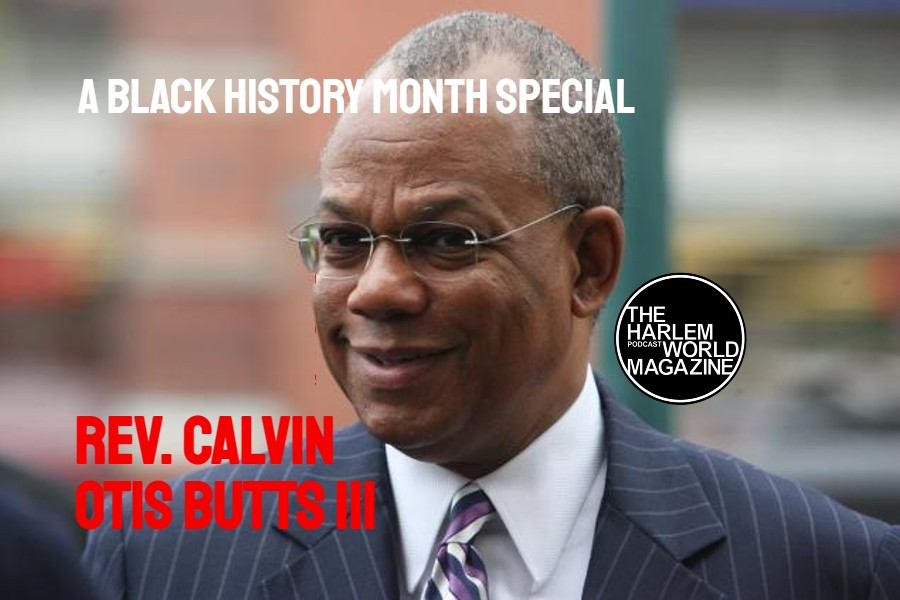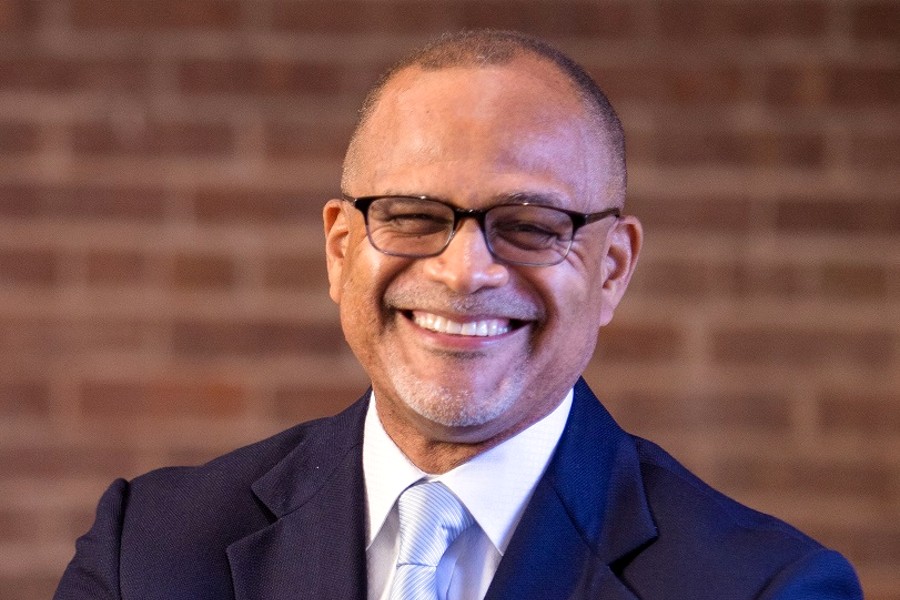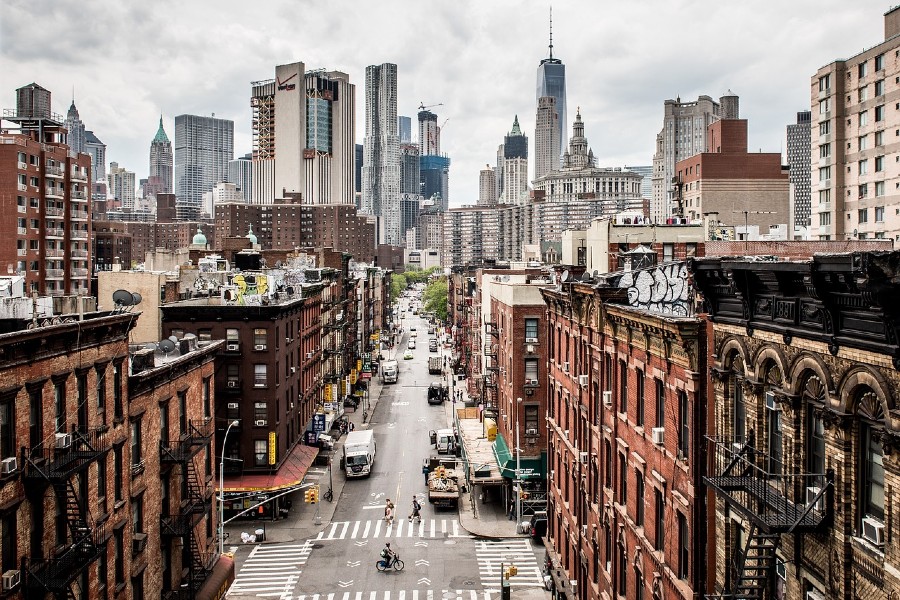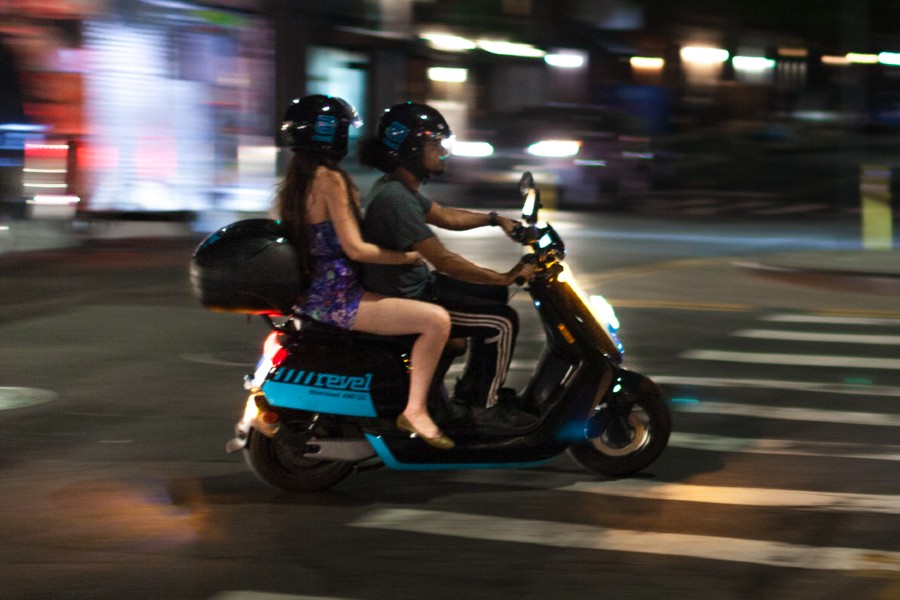By Richard Daub
This is part three and four in a six part series.
I was also curious about what the outside perception of Harlem. Having grown up on Long Island in the 1980s, Harlem was simply a place that you did not go. Of course, back then neither was Times Square or even Central Park. The only thing I knew about Harlem was Showtime at the Apollo when it used to come on after Saturday Night Live at one in the morning.
Unfortunately, many Long Islanders, as well as others who grew up in the greater New York metropolitan area or even other areas of the city such as Riverdale and Staten Island, have been so brainwashed by the perception of Harlem being a violent, crime-riddled area that they still won’t even think about coming here. Despite this image no longer being true, local businesses are doing very little or nothing at all to reach out to these groups who continue to have a negative perception of Harlem, even if they have heard people saying that Harlem is now actually a nice, safe place. Yet, there has been no major campaigns by local businesses to Come visit the New Harlem, enjoy restaurants such as Chez Lucienne, the River Room, or Melba’s. And this is at a time when there has been expressed outside interest in developing Harlem as a tourist attraction by companies such as Gray Line and City Sights, who have not been successful in finding cooperation with these establishments.
Of course, there remains the issue of there not being enough amenities for even local residents to enjoy, a common complaint among some of the newer residents here who often venture out of Harlem when they want to go out to eat or have a drink. While there are several wonderful restaurants throughout the neighborhood, they are scattered about rather than being located in a Central location such as 125th Street, which is presently dominated by chain apparel stores. Many of the newer locals don’t know about many of these restaurants because they are tucked away and doing little to attract customers who live in Harlem. Many of the newer residents like Harlem merely because it is convenient to the rest of Manhattan. They didn’t move here because of the neighborhood itself. When they go out to eat or to have a drink, they don’t even consider staying here because there isn’t enough to choose from. They go to other parts of Manhattan to spend their money.
While many who grew up in and around New York generally have a negative perception of Harlem, those who grew up outside of New York, particularly those from other countries, tend to have a very different perception. They think Harlem is a very culturally rich area and one of the great music scenes in New York City. Many expect to come here and find jazz clubs and Uptown nightlife that other parts of Manhattan do not offer, but when they get here they are disappointed when it does not meet their expectations. One of the only other names they recognize besides the Apollo is the Cotton Club at it’s odd current location on a small desolate island at the western end of 125th Street. The place always looks like it is closed, and there are no signs or menus posted outside. The building itself resembles a roadside strip club one might find outside of town. It doesn’t seem worth it to risk your life crossing that very dangerous section of 125th with the short traffic light and all the cars racing to and from the Henry Hudson Parkway to get a closer look. And even if you are willing to get close, it’s not like you can see inside that it’s actually a decent place.
Yet, imagine this place located on 125th somewhere near the Apollo. A brand name like this has the potential to be a huge success. People would see the Apollo and then fix their eyes on the Cotton Club and say, ‘Hey, I’ve heard of this place.’ They could have live music and post a menu outside the door. People on the tour bus who weren’t planning on checking out Harlem and were only passing through for this 15 minute section of the tour may say to each other, ‘Hey, this looks like a happening neighborhood, we should check it out,’ or decide to come back later for dinner and to hear some live music. They would spend money here—outside money.
The Apollo is such a tremendous anchor to Harlem that provides enormous potential for the right businesses. Yet, it is surrounded by businesses that do not benefit from its presence. The Apollo is a destination that over a million tourists a year see from the tour buses alone, and if there were anything of interest besides the Apollo where people could get off the bus and sit down and have a drink or a cup of coffee or browse or whatever, that business would be a huge success. But nobody seems to realize this or doing anything about it, including the so-called “celebrities” who live here who have the wealth to make it happen. And why aren’t the present business owners on 125th Street doing something a little more creative to attract some of these billions of dollars that are passing by on these buses? They have had plenty of time and opportunity to create something interesting and financially successful, but instead they complain that they are being pushed out by big corporate developers. They complain, yet they offer nothing original. They exploit urban and hip hop clichés that bring little value to the community and create very few jobs.
Does Harlem really need so many clothing stores that sell low quality merchandise in stores that are always a mess with piles of clothes all over and employees who are there not to help customers but to make sure that they aren’t stealing anything? Yet, many locals express a desire to keep open the very businesses that are exploiting them. Perhaps it is that same old fear that they too will be priced out, a danger that will not come to pass any time soon in this real estate market or at any time in the near future. Perhaps that was a more realistic threat when people were going crazy buying up real estate all over the city, but that’s not going to happen again anytime soon. And, even if the real estate market does make a comeback, it will in no way resemble the buying frenzy it was a few years ago. Even then, nobody got pushed out or priced out of Harlem. There was enough empty space in Harlem for these developers to come in and build without displacement, and most of this new construction included affordable housing. But now, even though this perceived threat has passed, many continue to resist change. This resistance does sometimes drive prospective entrepreneurs away because residents accuse them of destroying their community. In the end, all this resistance does is open the door for outside corporations such as Applebee’s who don’t give a damn about the community to come in and open up shop. Continued resistance will allow other chain restaurants and retailers such as the Gap, Wal-Mart, T.G.I.Friday’s, or Checker’s to come in and take over 125th Street. Current local business are not being pushed out; they are pushing themselves out by continuing to sell cheap generic products in unorganized stores.
As for what would make Harlem a more tourist-friendly place, David believes that annual events that can be promoted would bring in lots of tourist dollars and could also be enjoyed by local residents.
“I think we need to do a lot more calendar events, meaning we need to do more promotional festivals, activities,” he said. “Do you know of an activity or weeklong event that’s synonymous with Harlem?”
I explained that there are events, but they are disorganized and not very well promoted outside of Harlem. There is no one signature event that allows locals and outsiders to both share the pride and culture of Harlem. The events here are mostly geared towards local residents and often to specific demographics. There is no Harlem Jazz Festival or Harlem Gospel Festival attracting big names and large crowds. There is not a strip of bars and restaurants in Harlem besides the tiny one on 12th Avenue where there are enough establishments to band together and have a “Restaurant Week” or a weeklong series of events that celebrates Harlem not only as it once was, but what it is today and what it could be. There are spots dotted around Harlem, but they are too spread out to build something around and too small to be worthy destinations in themselves. There’s a place here and there, but in between there’s a mile of dollar stores, Duane Reades, and bodegas.
“Harlem is one of the top two reasons why people want to take the Uptown Loop bus tour, the other being Central Park” David said. “I think most people that take our Uptown Loop tour are very aware of the Harlem community, and that’s why they want to see and explore it. The Europeans especially are familiar with Harlem tours, and they want to participate with the Sunday brunch and gospel tours.”
The gospel tours are very popular. Just walk around Harlem on any given Sunday morning and you will see lines of tourists a block long waiting to get in and see these gospel choirs. So why aren’t there more businesses that cater to this crowd? And why isn’t there a Harlem Gospel Choir Festival? The churches are benefiting financially (although some parishioners may not appreciate all these tourists invading their churches). Harlem has the potential to be the gospel and jazz capital of the Northeast, so why hasn’t anything been done to promote Harlem as a musical capital like New Orleans or Nashville? Someone could open a business where the gospel choirs can perform (not only on Sundays but any day of the week) and where the tourists can eat and have coffee and buy CDs or whatever. Instead, this is being left to the churches. It is unfathomable that in this age of capitalism, no one is capitalizing on the enormous potential of Harlem’s culture. People come here from all over the world hoping to experience this culture, but, for the most part, they aren’t finding it unless they already know where and when to look. This culture has the potential for enormous expansion if anyone is willing to do anything about it. The City and local politicians certainly aren’t doing anything to organize and promote events that will bring tourists to Harlem. People from all over the world want to come here and see Harlem, but when they get here they don’t know what to do, and local businesses and residents look at them like they don’t want them here.
“What would help is having an event such as a parade through Harlem that is established, something that celebrates the culture and livelihood of Harlem on an annual basis, not just when a new business opens or when there’s an event at the Apollo,” David said. “I also want to stress that Harlem is not just 125th Street. You need the time to venture through the whole neighborhood, but we need a venue or an event to celebrate it. Right now it’s very difficult for us to do so aside from our bus route and the bus stops. There’s really no other way to really promote it.”
More tourists would mean more jobs and more money for Harlem residents. Instead, business owners have not taken the necessary steps to attract outsiders and their money. Instead, they are content to capitalize on the money that is already here, which results in a stagnant local economy.
I wanted to see Harlem from a tourist’s perspective, so David was kind enough to arrange for me to take the “Uptown Loop” tour myself. This particular tour is approximately two hours, about 15 to 20 minutes of which passes through Harlem.
The first stop in the area is at St. John the Devine on 110th Street, then the bus heads up to Riverside Church at 120th and Broadway. Next it heads up Riverside Drive and makes a stop at Grant’s Tomb and continues up to 135th Street, where it turns right and heads back to Broadway. It then heads south on Broadway, past my building at 133rd, and turns right at 131st Street to Madame Alexander’s Doll Factory. At 12th Avenue, the bus makes a left and then another quick left onto 125th Street, where it heads east past the Apollo to Adam Clayton Powell Blvd. It makes a right on ACP and then a quick left at 122nd. At Lenox it makes a right and heads down to 116th, where it makes a left and stops at the Malcolm Shabazz Harlem Market. It then makes a right at Fifth Avenue and heads south, across 110th Street and towards Museum Mile and the Upper East Side.
It was very cold on the day I took the tour, so the upper decks of the buses were covered with a glass encasement designed to allow for unobstructed views. However, the encasement of the bus I boarded was so “filthy” that I could only make out the shapes of the buildings hovering above us. Also, the encasement only covered the top of the bus, so there was a large opening in the back of that was freely letting in cold air.
The bus was crowded, so I had to sit in the second to last row. The encasement was very low, so someone six feet or taller such as myself has to duck to avoid a bump on the head. It looked like a big MRI machine with seats. I’m a bit claustrophobic, so it was a bit uncomfortable.
Most of my fellow passengers were speaking in foreign tongues and wearing giant sunglasses, which made me suspect that they were European. I did not hear a single English-speaking voice that did not have a strong accent, including the tour guide, a woman who looked to be in her sixties who was collecting the tickets downstairs and who made it a point to tell me that my ticket was good only for the Uptown Loop as if I looked like the type who might try to pull a fast one by sneaking onto the Downtown Loop bus afterwards.
When we started moving, the tour guide sat in an empty seat up front and picked up the microphone. Those of us in the back could not hear her at all, and a gentleman with a British accent raised his hand and said that we in the back could not hear her. She looked agitated at the interruption and said that the group before this one was able to hear just fine and then suggested maybe we should just be quiet and listen. But very few people were talking to begin with, so this made no difference.
A couple of minutes later the British gentleman raised his hand again and said he still couldn’t hear, and his companion suggested that maybe she should just turn up the volume. After glaring at the Brits for a moment, the guide finally turned and shouted down the stairs to the driver to turn the sound up. She then turned back to us and with a stern tone said that we all had to be quiet so that everyone could hear her. We had barely gone two blocks and this was already beginning to feel like a bad high school field trip.
Heading up Eighth Avenue approaching 50th Street, the guide said that the entire area we were in now was known as “Columbus Circle”. This was news to me. I thought Columbus Circle was Columbus Circle, and that the area we were in is known as Midtown. When we actually arrived at Columbus Circle and were driving around the traffic circle, she said that the area we were now in was Central Park West and that the next stop was Central Park South, which was actually on Central Park West because we had already crossed Central Park South. She asked how many people wanted to get off at this stop, and about ten or so people indicated they did by raising their hands. There was no cord to pull or strip to press to request a stop like an MTA bus, so every time we approached a stop, the guide asked if anyone wanted to get off. If anyone did, she shouted down the stairs to let the driver know that people were getting off.
About ten more people hopped on to replace the ten that had exited, so the bus was once again at full capacity as we headed up Central Park West. The guide indicated that Madonna lived in one of the buildings that we had just passed, and she ordered everyone to remain quiet as if not to disturb her. I wondered if she would do the same when we passed my building in 133rd.
We continued on to Lincoln Center and up into the Upper West Side. On a nice day it would probably be a good view from the top of the bus, but this encasement window was so dirty that I couldn’t help but think that I would have seen a lot more from an MTA bus. It was also a little bit disconcerting to see the traffic lights hover just above us as we passed underneath them. If the cover was not on and someone happened to stand up at the wrong time, it would not be pretty. I looked at my ticket to see if there were any warnings about decapitation. There was nothing specific about losing your head, but the company claimed that it was not responsible for injuries, delays, inconveniences, or anything else for that matter.
The next major stop was the Dakota on 72nd, which she pointed out as the building where John Lennon was shot (never mind that he actually lived there before being shot). She also mentioned that Alec Baldwin had just purchased an apartment there, but did not mention anything about the building itself. About ten people hopped off here, and for a moment there was a little more breathing room. Then ten more hopped on, and once again every seat was taken.
Several people indicated that they wanted to get off at the Museum of Natural History, which was the next stop. The guide became impatient and told them that the stop was coming up and that they had to wait. The bus was quiet, but you could feel the tension building between the passengers and the tour guide. There was no enthusiasm from the passengers, and there were no “oohs” and “ahhs” at any of the things she pointed out, which seemed random and relatively insignificant. Perhaps they were afraid of being yelled at if they made any noise. It’s not like anyone was allowed to have fun on this tour. I would have been pretty pissed if I had paid $44 for this. I began to think that the only value of this tour was that it was an option for tourists who are too lazy to try to figure out how to read a subway map or too shy to hail a cab.
At 91st & Broadway she said that this was still the Upper West Side, “but not the yuppie Upper West Side… This is the quiet Upper West Side.” I wasn’t sure exactly what this was supposed to mean, but it was the first time I had heard the term “yuppie” in about a decade.
At 96th St. we turned off Broadway and headed towards Amsterdam. She said the next major stop was St. John the Devine, which she talked up like it was one of the highlights of the tour. It occurred to me, though, that if most of these people were from Europe, they probably wouldn’t be very interested in seeing an old cathedral. After all, isn’t Europe littered with old Cathedrals, many of which are probably much grander than this one? As I suspected, nobody got off at this stop. As architecturally beautiful as it is, St. John the Devine is probably not very interesting to European tourists. They came to see New York City, not old cathedrals. They could have stayed home if they wanted to see those.
Finally, heading up Amsterdam we entered Morningside Heights and the campus of Columbia University. She was not nearly as enthusiastic about Columbia as she was about St. John the Devine, and there was apparently no stop in this area. I was expecting her to describe Columbia as an Ivy League school and one of the elite universities in the United States, but instead she indicated that “Columbia was run down not too long ago, but now it is an excellent school, particularly for journalists.” I let out a little laugh at this, and the person sitting next to me gave me a quick glance. My wife got her undergraduate degree at Barnard and is currently a student at Columbia Law, so I couldn’t wait to tell her about this description (she too laughed out loud when I did tell her later that evening). The guide also mentioned that President Obama was a Columbia graduate, which may have added some significance to the school (but, of course, they were not nearly as important the buildings where Madonna and Alec Baldwin lived). And, despite this being an institution of higher learning where there are classrooms and libraries, she did not order us to be quiet here. Apparently Madonna practicing Kaballah requires more quiet concentration than an Ivy League courseload. As for Morningside Heights, the only thing she said about it was that it was “a very old neighborhood”.
Become a Harlem Insider!
By submitting this form, you are consenting to receive marketing emails from: Harlem World Magazine, 2521 1/2 west 42nd street, Los Angeles, CA, 90008, https://www.harlemworldmagazine.com. You can revoke your consent to receive emails at any time by using the SafeUnsubscribe® link, found at the bottom of every email. Emails are serviced by Constant Contact


















